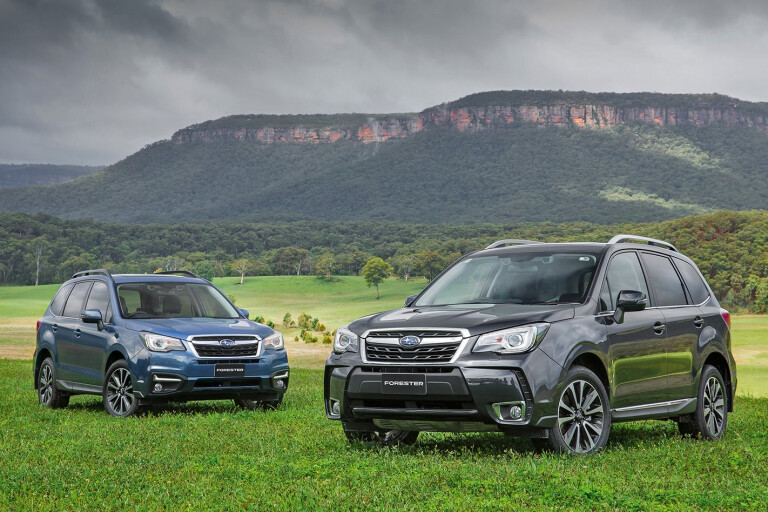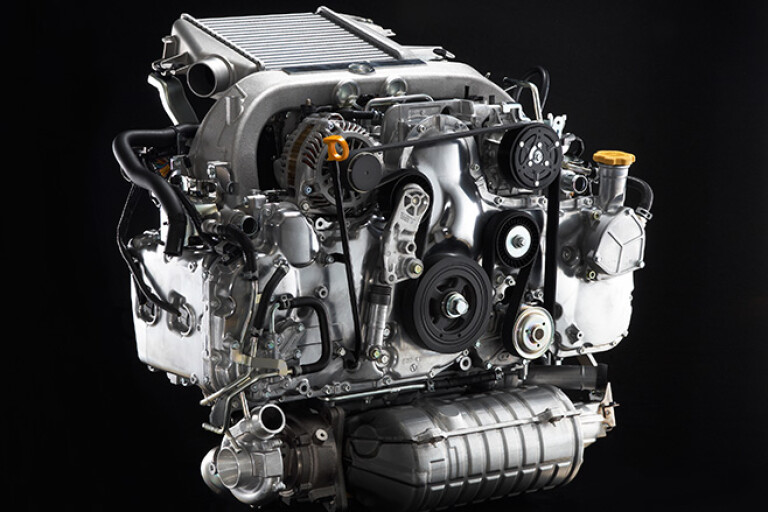
Subaru will turn its back on the diesel engine, with the company’s senior management reluctant to continue developing its oil-burning boxer engines and favouring downsized turbocharged petrol engines instead.
Subaru debuted its first diesel model in 2008 when it introduced a 108kW/350Nm 2.0-litre turbo diesel into the Forester line-up, finally giving Subaru SUV buyers a torquey powertrain option that wasn’t the thirsty turbo petrol powerplant used by the performance-oriented Subaru Forester XT.
But since then, very few changes have been made to that motor. Dubbed the EE20, the two-litre boxer diesel makes the same torque output today as it did when it first appeared eight years ago, while peak power has only risen by 2kW (and only in the Outback diesel; the Forester diesel still produces 108kW).
And according to Masahiko Inoue, project manager of the new Subaru Impreza, the company has already given up on developing the EE20 any further.

“With diesel it is too difficult to keep the exhaust gas clean,” Inoue said to WhichCar at the Japanese launch of the new Subaru Impreza.
“We have already stopped developing it. Diesel is a difficult question for us. Officially, some European dealers or members request us to continue to make it, but our top management direction is to discontinue diesel.
“We are discussing this with the European side, the US side and others, discussing what we should do. But in future I think we will not have diesel.”
And when it comes to engines with big torque, the diesel isn’t the only Subaru engine on the chopping block. As more Subaru models transition onto the new SGP platform that sits beneath the 2017 Impreza, Subaru’s naturally-aspirated 3.6-litre flat-six petrol engine, which currently serves in the Subaru Liberty and Outback, will likely be culled in the process.
“We are investigating whether to keep it,” Inoue revealed.
“My personal opinion is that six-cylinder is very difficult to match to the crash absorption area, its weight is too heavy and the fuel economy is not there.”

With big-displacement six cylinder engines and diesel powerplants falling out of favour, Inoue confirmed that Subaru was looking toward adopting a similar strategy as many other manufacturers, with downsized turbo petrol engines and hybrid powertrains being a key part of its future product plan.
“A small, lightweight, high-performance turbo is a better solution,” he said. “Our direction is downsizing with turbo, plus hybrid. We can get a turbo engine to perform the same as a 3.6-litre naturally aspirated [engine], but with two litres.”
“We’re now investigating hybrid also. We have a partnership with Toyota that allows us to use their hybrid technology.” Inoue said.
Subaru has already begun putting its low-capacity turbo strategy into practice, debuting a 1.6 litre turbo version of the new Impreza’s 2.0 litre flat four in the Japanese and European-market Levorg wagon last year.
With 125kW of power and 250Nm of torque, the 1.6 turbo – called the FB16 internally – boasts 10kW and 54Nm more than the new Impreza’s 2.0 litre naturally-aspirated flat four and would be a worthy motor for sportier or high-grade versions of that car, however Inoue disclosed to Which Car that more engineering work needed to be done to integrate it with the 2017 Impreza’s new modular chassis.
Inoue also confirmed that unlike Ford and BMW, Subaru would not be reducing its cylinder count below four, citing concerns about the noise and refinement of a two-cylinder boxer engine.
COMMENTS